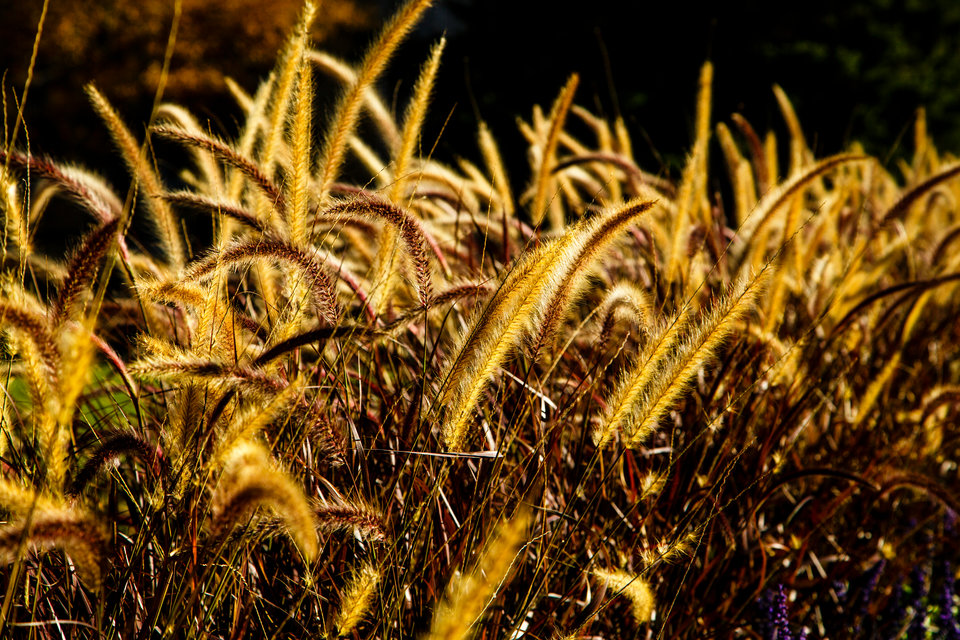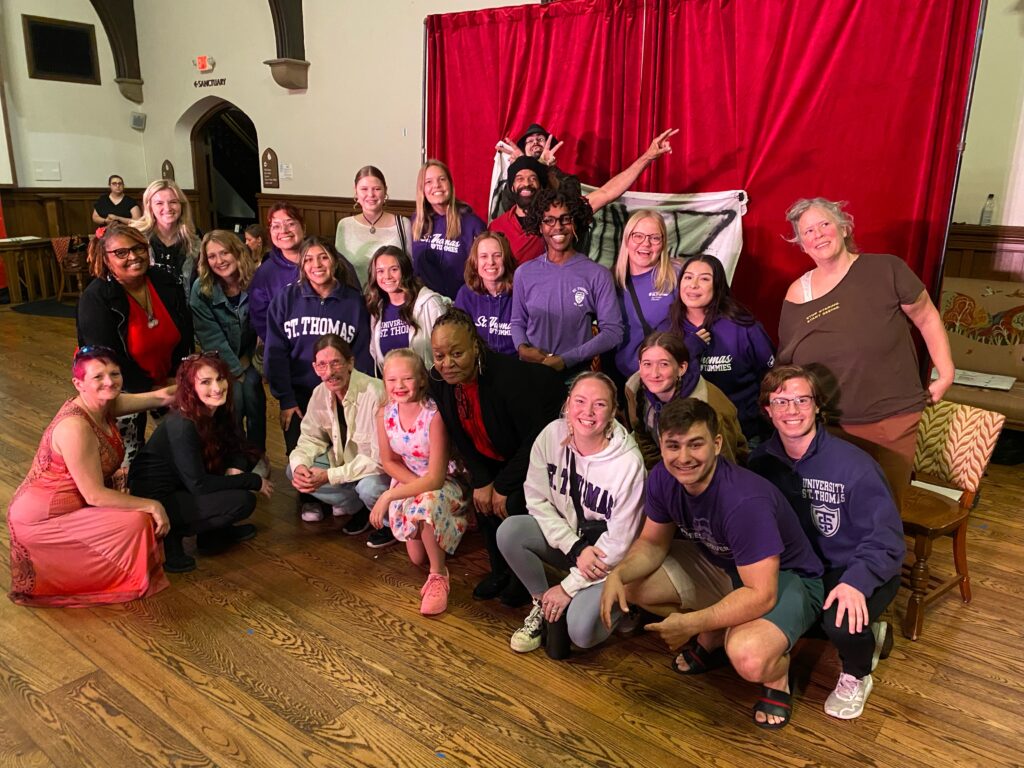Two projects under the partnership started in winter 2019 and were based at the Council’s Empire Wastewater Treatment Plant in rural Dakota County. One assessed the feasibility of replacing turfgrass with native prairie or other sustainable plantings; the other investigated why trout are not as numerous in the Vermillion River as expected.
Partnership starts in the classroom
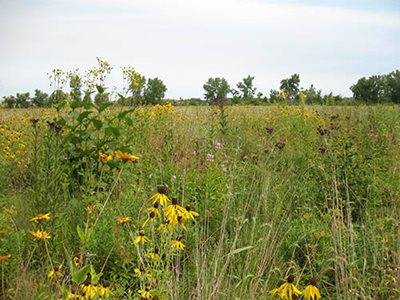
Restoration of a wetland meadow on the Council’s Empire Plant property in the 2000s created habitat for a variety of wildlife and native prairie plants.
Early in the semester, Council staff visited the classroom of College of Arts and Sciences biology professor Eric Chapman’s capstone class for environmental science majors. The staff discussed a variety of topics, including the Council’s mission and operations and the history of water quality in the Mississippi River. In February, students toured the treatment plant and learned about the treatment process.
Then Deb Rose, a planner in the Council’s Environmental Services division, talked to the class about how the mission, vision and values of Environmental Services drive planning and operations. At this stage, students began to develop business cases for their projects using the mission, vision and values.
“I’ve been extremely lucky to work on several projects at the University of St. Thomas that allow students to connect with the outer community,” said Paige Westra, neuroscience and environmental science double major. “In meeting with company employees, we practice preparation, professionalism and thoughtfulness.
“We are pushed to produce the best possible product because we hope to positively affect our partnership; however, there is less professional pressure in an environment where we are supported by our professor and the collaborating company,” she said.
Walking the grounds and wading the river
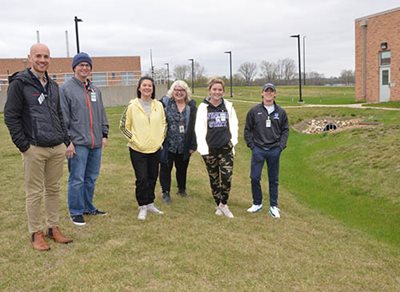
Visiting the Empire Wastewater Treatment Plant are (from left) St. Thomas professor Eric Chapman, students Blake Mueller, Alyssa Gilmore, Council engineer Karen Jensen, and students Erika Zanoth and JP Fischer.
Once the weather warmed up and the snow melted, the four students working on the landscaping projects walked the grounds of the Empire Plant. They wanted to see firsthand which areas might be suitable for replacing lawn with lower-maintenance native prairie or other sustainable plantings.
The students met with plant operator Tom Zajac, who explained why and where lawn is necessary for easy access to settling tanks and other infrastructure that requires regular maintenance. He also said the workers at the plant are proud of their workplace and like to keep it neat and tidy.
Then the students returned to campus to research the costs and benefits of various approaches. In May, they presented recommendations to Council staff. Karen Jensen, project manager and Environmental Services engineer, said their research will provide a foundation for landscaping efforts at several wastewater treatment plants in the future.
“Traditional turf lawns provide few environmental benefits and can actually cause harm since they require intensive mowing, frequent watering, and applications of both fertilizers and pesticides,” Jensen said. “The students’ research identifies the many benefits of prairie plant species – including wildlife and pollinator habitat, carbon sequestration in their deep roots, and no need for watering, fertilizers or pesticides. It also shows that prairies pay for themselves in about six years through reduction in mowing costs.
“The students took Tom Zajac’s comments to heart,” Jensen said. “They recommended starting with conversion of relatively small areas away from wastewater operations as demonstration plots to assess aesthetics and acceptance by staff.”
River warming is likely caused by human development
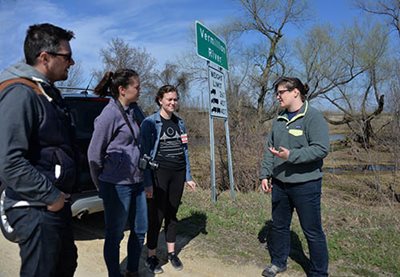
Council planner Eric Wojchik (left), St. Thomas students Jenna Abrahamson and Paige Westra, and Council scientist Jen Kostrzewski talk along the Vermillion River near the Empire Plant.
Another group of St. Thomas students focused on the Vermillion River adjacent to the Empire plant. A decade after the plant stopped discharging effluent into the river, the native trout population has not rebounded as expected. The students studied water temperature and quality from three ditches that discharge into the river in the stretch adjacent to Council property to determine how that water might be impacting the river.
“I chose the Vermillion River trout project mainly because I’ve always been interested in rivers, and more specifically the interaction between fluvial systems and the biology and humans surrounding them,” said Jenna Abrahamson, environmental science major. “I am learning skills in professional environmental analysis and ... how crucial it is for interdisciplinary thinking and communication when it comes to solving and addressing environmental problems from a business perspective.”
The students concluded that the diversion of treatment plant effluent from the Vermillion to the Mississippi in 2009 did not significantly affect water temperature in the reach adjacent to the plant. “The Middle Mainstem of the Vermillion River where the [Empire Plant] is located is warming most likely due to increased human development in the region in combination with general climate change trends,” the students wrote in their report.
Partnership has borne fruit for several divisions at the Council
These projects are among several between the Council and the Sustainable Communities Partnership in St. Thomas’s Office of Sustainability Initiatives. The only cost to the Council is staff time.
A sampling of other joint Council/St. Thomas projects either completed or in process:
- An English class evaluated local government communications about climate change with an eye toward what’s effective and what isn’t.
- A science class took lake-core samples to look at the history and use of road/sidewalk salt and how it impacts water bodies.
- A justice and peace studies class conducted interviews about the connections between transit, sustainable communities and social justice, then teamed with an artist who created book cover illustrations and a Metro Transit light rail car wrap inspired by the stories.
“These projects are mutually beneficial,” said Eric Wojchik, senior planner in the Council’s Community Development division and coordinator of the partnership with St. Thomas. “It’s nice to be able to share the Council’s story and educate young adults about the value of the work we’re doing.
“We get a fresh perspective from them and innovative ideas that we may not have considered,” he said. “By doing applied work, they gain professional skills. We’re helping to bring up the next generation of planners, engineers and communicators.”
“It’s easy to lose sight of what your courses are helping you work toward when all that you do is within a classroom setting,” said Alyssa Gilmore, a neuroscience and environmental science double major. “These community partner projects really open my eyes as to what my talents are and how I can use them to influence change.”
